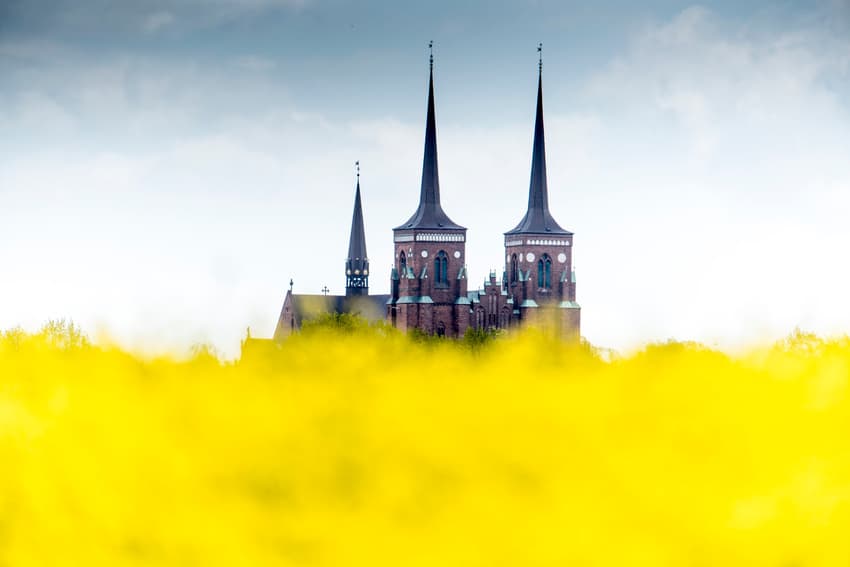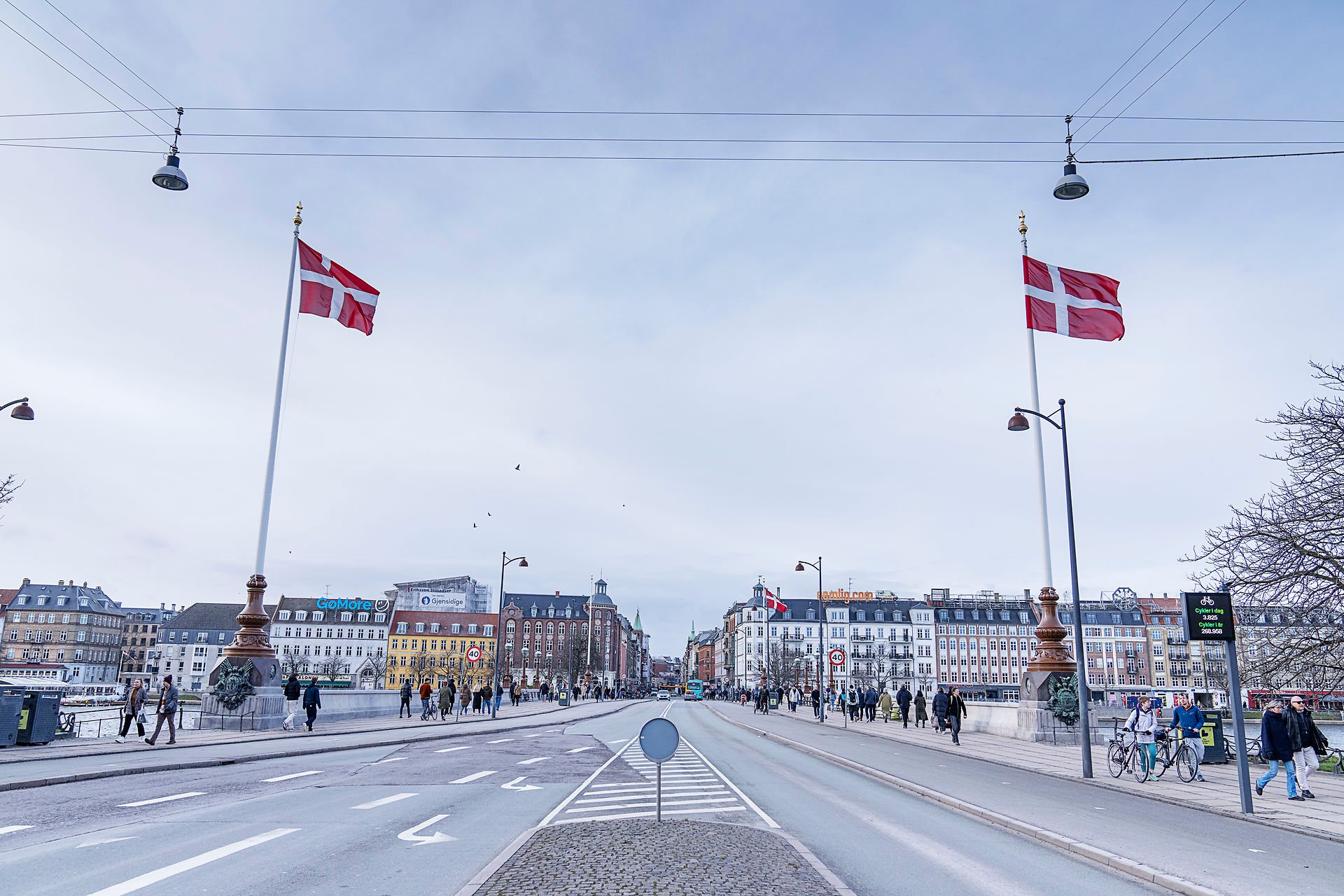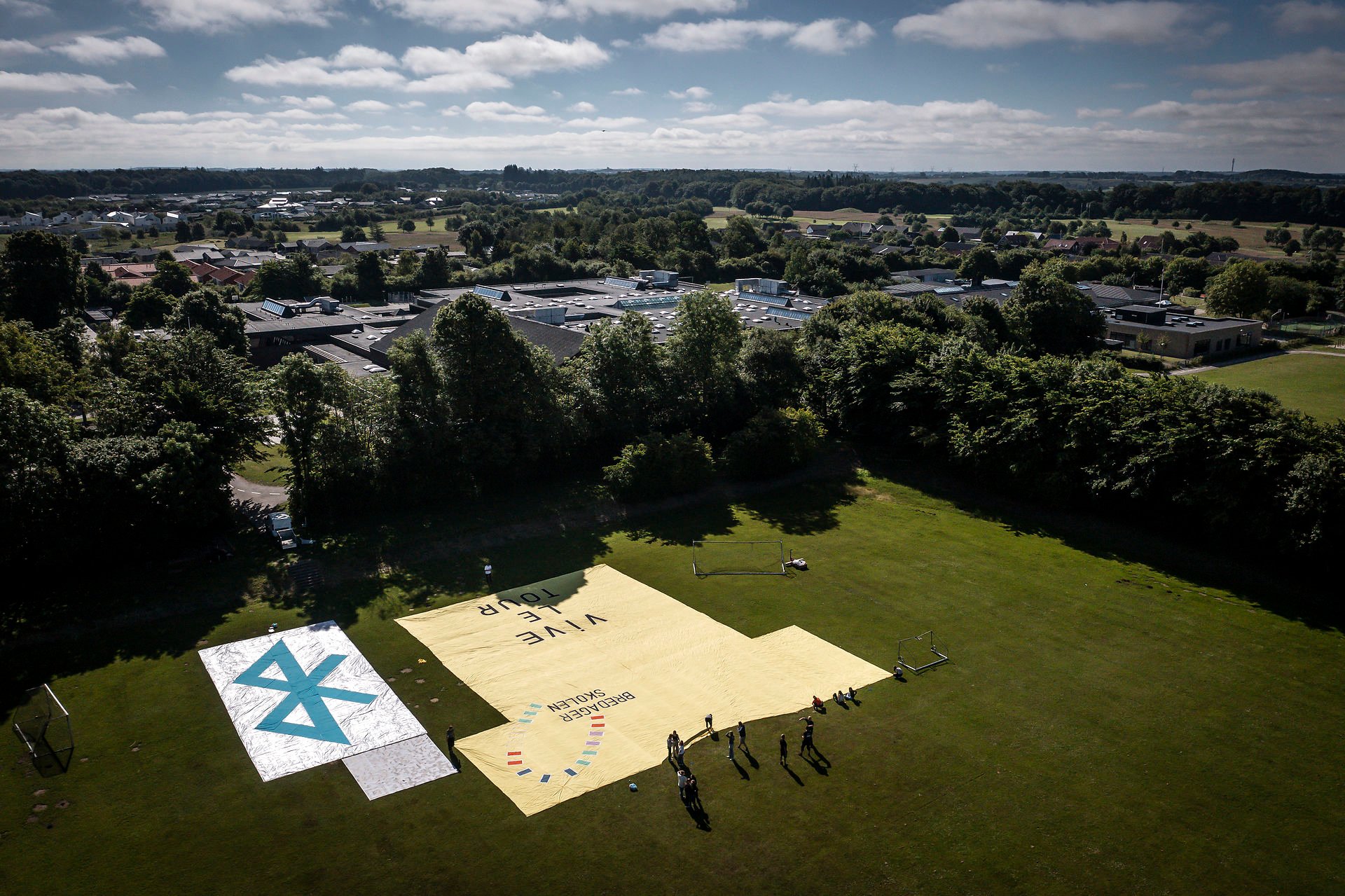Five great spots to see the Tour de France in Denmark

Excitement is ramping up in Denmark as the Tour de France, hugely popular in the Nordic country, prepares to take off from Copenhagen on Friday.
The first three stages of this year’s Tour will take place in Denmark. The Danish Grand Depárt was originally scheduled to take place in 2021 before being delayed a year due to Covid-19.
The three Danish stages take in capital Copenhagen, the South Jutland countryside and the iconic Great Belt Bridge before the Tour continues in France.
With hundreds of kilometres of Danish road to be covered by the riders, we can’t cover every vantage point on the route, but here are five locations where the spectacle is sure to be impressive.

Dronning Louises Bro. Photo: Claus Bech/Ritzau Scanpix
Dronning Louises Bro (Bridge), Copenhagen
The 13-kilometre time trial route for the first stage of the tour on Friday crosses Dronning Louises Bridge, which connects the diverse Nørrebro neighbourhood with the historic centre of the Danish capital.
A popular spot for social gatherings, particularly in the summer when groups of young people gather on its benches and grassy banks, the bridge offers an atmospheric view across Copenhagen’s lakes.
The location of a festival atmosphere during other sporting events – notably the Copenhagen Marathon and Half Marathon – the bridge is sure to be a noisy spot to cheer on the riders.
Parken Stadium, Copenhagen
The home stadium of the Danish national football team, Parken is located in the Østerbro neighbourhood opposite a large park, Fælledparken.
The Tour riders will charge past Parken along the broad Øster Alle before turning right onto Jagtvej and completing a triangle by returning along Østerbrogade towards the junction known, aptly, as Trianglen.
The area is a sporty and active one any time and is sure to be buzzing with the arrival of the Tour.
Here are the 3 Danish stages for @letourdk in 2021! We are so excited to show some of the most beautiful areas of Denmark for the whole world. The @LeTour in 2021 will be an amazing race and an celebretion for everyone. 🥳🚴🏻♂️🚴🏻♂️✌🏻@FrankJensenKBH @amaurysport @ctricartour pic.twitter.com/GdMdmjcP9Q
— Grand Départ 2022 🇩🇰 (@letourdk) February 4, 2020
Stage 1 map and details via Tour de France
READ ALSO: How will the Tour de France affect traffic and travel in Denmark?
Roskilde Cathedral
The 202-kilometre second stage of the Tour starts on July 2nd in Roskilde, near the Viking Ship Museum on the shores of the Isefjord, and makes its way through the medieval town and onwards around the coast of Zealand before what promises to be a spectacular final stretch across the Great Belt Bridge.
Roskilde Cathedral, a UNESCO world heritage site and burial place of Danish royalty, stands out from any vantage point in the old town as its two spires climb skywards.
Stage 2 map and details via Tour de France

Decorations in Vejle ahead of the Tour. Photo: Mads Claus Rasmussen/Ritzau Scanpix
Vejle Mølle
The third stage on Sunday July 3rd sets out in unusually hilly territory by Danish standards. Beginning at the harbour in Vejle, the riders will tackle undulating and at times steep roads before circling back into the fjord city and climbing uphill past its old windmill, Vejle Mølle.
The old mill is one of the most recognisable sights in the town and overlooks the fjord, providing a view of two modern architectural works which are also a source of local pride: the “Bølge” wave building and Fjordenhus, a harbourside art museum designed by Icelandic-Danish artist Olafur Eliasson.
Christiansfeld
The second half of the third stage is on flat, inland terrain, meaning the riders will probably avoid the worst of the brisk winds usually present in more coastal parts of Denmark.
At 91 kilometres, the tour reaches Christiansfeld, another of Denmark’s UNESCO world heritage sites. Featured in the film “A Royal Affair”, the old town is filled with straight streets and right angles providing a platform for some intermediate sprints.
Stage 3 map and details via Tour de France
Comments
See Also
The first three stages of this year’s Tour will take place in Denmark. The Danish Grand Depárt was originally scheduled to take place in 2021 before being delayed a year due to Covid-19.
The three Danish stages take in capital Copenhagen, the South Jutland countryside and the iconic Great Belt Bridge before the Tour continues in France.
With hundreds of kilometres of Danish road to be covered by the riders, we can’t cover every vantage point on the route, but here are five locations where the spectacle is sure to be impressive.

Dronning Louises Bro (Bridge), Copenhagen
The 13-kilometre time trial route for the first stage of the tour on Friday crosses Dronning Louises Bridge, which connects the diverse Nørrebro neighbourhood with the historic centre of the Danish capital.
A popular spot for social gatherings, particularly in the summer when groups of young people gather on its benches and grassy banks, the bridge offers an atmospheric view across Copenhagen’s lakes.
The location of a festival atmosphere during other sporting events – notably the Copenhagen Marathon and Half Marathon – the bridge is sure to be a noisy spot to cheer on the riders.
Parken Stadium, Copenhagen
The home stadium of the Danish national football team, Parken is located in the Østerbro neighbourhood opposite a large park, Fælledparken.
The Tour riders will charge past Parken along the broad Øster Alle before turning right onto Jagtvej and completing a triangle by returning along Østerbrogade towards the junction known, aptly, as Trianglen.
The area is a sporty and active one any time and is sure to be buzzing with the arrival of the Tour.
Here are the 3 Danish stages for @letourdk in 2021! We are so excited to show some of the most beautiful areas of Denmark for the whole world. The @LeTour in 2021 will be an amazing race and an celebretion for everyone. 🥳🚴🏻♂️🚴🏻♂️✌🏻@FrankJensenKBH @amaurysport @ctricartour pic.twitter.com/GdMdmjcP9Q
— Grand Départ 2022 🇩🇰 (@letourdk) February 4, 2020
Stage 1 map and details via Tour de France
READ ALSO: How will the Tour de France affect traffic and travel in Denmark?
Roskilde Cathedral
The 202-kilometre second stage of the Tour starts on July 2nd in Roskilde, near the Viking Ship Museum on the shores of the Isefjord, and makes its way through the medieval town and onwards around the coast of Zealand before what promises to be a spectacular final stretch across the Great Belt Bridge.
Roskilde Cathedral, a UNESCO world heritage site and burial place of Danish royalty, stands out from any vantage point in the old town as its two spires climb skywards.
Stage 2 map and details via Tour de France

Vejle Mølle
The third stage on Sunday July 3rd sets out in unusually hilly territory by Danish standards. Beginning at the harbour in Vejle, the riders will tackle undulating and at times steep roads before circling back into the fjord city and climbing uphill past its old windmill, Vejle Mølle.
The old mill is one of the most recognisable sights in the town and overlooks the fjord, providing a view of two modern architectural works which are also a source of local pride: the “Bølge” wave building and Fjordenhus, a harbourside art museum designed by Icelandic-Danish artist Olafur Eliasson.
Christiansfeld
The second half of the third stage is on flat, inland terrain, meaning the riders will probably avoid the worst of the brisk winds usually present in more coastal parts of Denmark.
At 91 kilometres, the tour reaches Christiansfeld, another of Denmark’s UNESCO world heritage sites. Featured in the film “A Royal Affair”, the old town is filled with straight streets and right angles providing a platform for some intermediate sprints.
Stage 3 map and details via Tour de France
Join the conversation in our comments section below. Share your own views and experience and if you have a question or suggestion for our journalists then email us at [email protected].
Please keep comments civil, constructive and on topic – and make sure to read our terms of use before getting involved.
Please log in here to leave a comment.